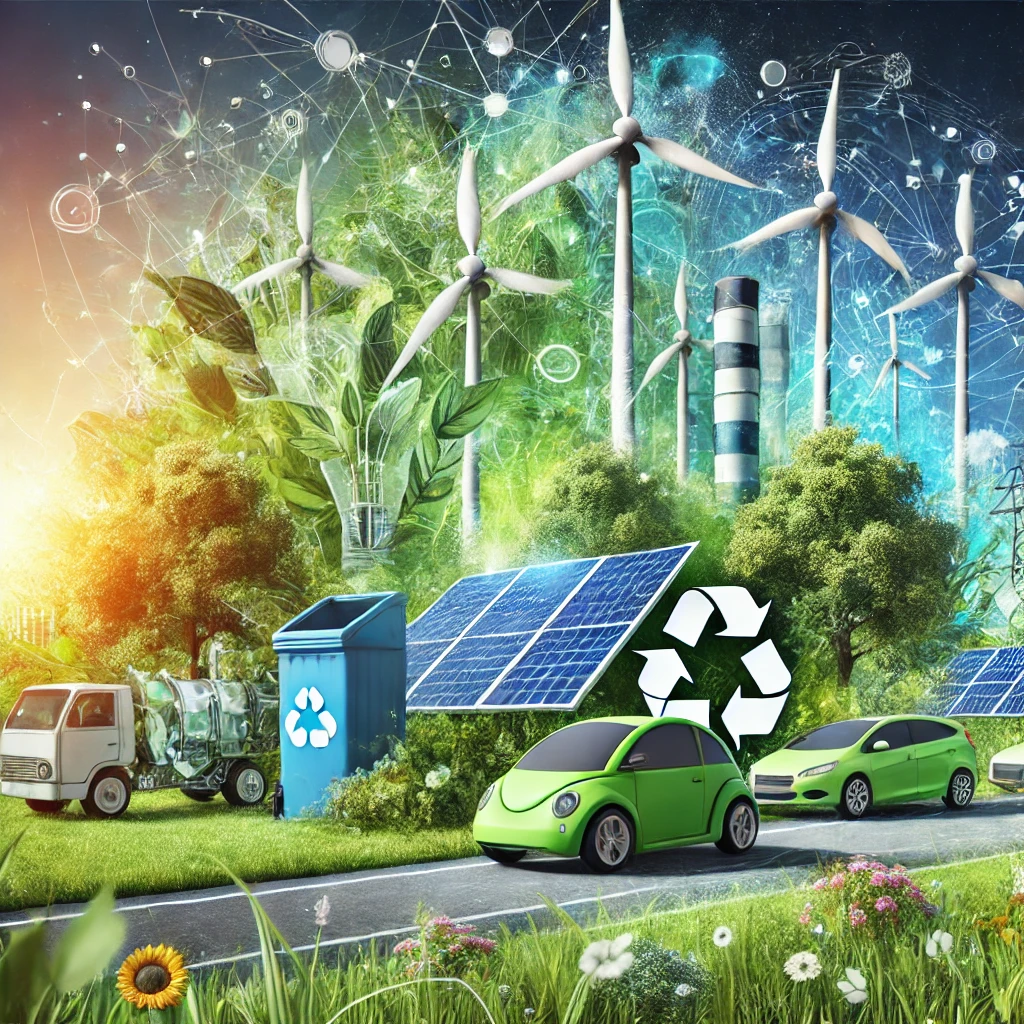Introduction
As climate change accelerates, the world faces an urgent need for sustainable solutions. Green technology, or cleantech, represents the innovative use of science and technology to create environmentally friendly systems and processes. This article explores groundbreaking green technologies and their role in building a sustainable future.
What is Green Technology?
Green technology encompasses solutions designed to mitigate environmental harm while promoting resource efficiency. Its primary goals include:
- Reducing carbon emissions.
- Promoting renewable energy.
- Conserving natural resources.
- Supporting sustainable living practices.
Top Green Technology Innovations
1. Renewable Energy Technologies
Renewable energy is at the forefront of green tech, including:
- Solar Power: Advanced solar panels with higher efficiency and durability.
- Wind Energy: Offshore and onshore wind farms with improved turbine designs.
- Hydropower: Innovative solutions like micro-hydropower systems for small communities.
2. Energy Storage Solutions
Energy storage is critical for managing renewable energy sources. Innovations include:
- Battery Technology: Lithium-ion and solid-state batteries for long-term storage.
- Grid Integration: Smart grids that optimize energy distribution.
3. Sustainable Transportation
Eco-friendly transportation technologies are reducing emissions:
- Electric Vehicles (EVs): Adoption of EVs and development of charging infrastructure.
- Hydrogen-Powered Vehicles: A clean alternative for long-distance travel.
- Public Transit Innovations: Solar-powered buses and energy-efficient rail systems.
4. Waste Management and Recycling
Efficient waste management is key to a sustainable future:
- Smart Recycling Systems: AI-driven waste sorting and processing.
- Biodegradable Materials: Alternatives to single-use plastics.
5. Green Construction
The construction industry is embracing sustainability with:
- Energy-Efficient Buildings: Net-zero energy homes and smart HVAC systems.
- Sustainable Materials: Bamboo, recycled steel, and green concrete.
The Role of Green Technology in Daily Life
Green tech isn’t limited to industries; it’s becoming an integral part of everyday life:
- Smart Thermostats: Reducing energy consumption in homes.
- Eco-Friendly Appliances: Energy Star-certified devices.
- Sustainable Apps: Tools to track and reduce carbon footprints.
Challenges in Green Technology Adoption
Despite its benefits, green technology faces several hurdles:
- High Initial Costs: The cost of research, development, and deployment.
- Infrastructure Limitations: Lack of widespread support systems.
- Policy and Regulation: The need for global standards and incentives.
FAQ: Frequently Asked Questions
1. What is green technology?
Green technology refers to environmentally friendly innovations designed to reduce harm to the planet while promoting sustainability.
2. How does renewable energy contribute to sustainability?
Renewable energy reduces reliance on fossil fuels, lowers emissions, and provides a sustainable energy source for future generations.
3. What are some examples of green tech in daily life?
Examples include solar panels, electric vehicles, smart thermostats, and biodegradable materials.
4. Why is green technology important?
Green technology is crucial for combating climate change, conserving resources, and ensuring a livable planet for future generations.
Conclusion
Green technology offers a path to a sustainable future, combining innovation with environmental stewardship. By adopting and investing in green tech, individuals and industries can contribute to a healthier, more sustainable world. The time to act is now—every effort counts in the fight for our planet’s future.







